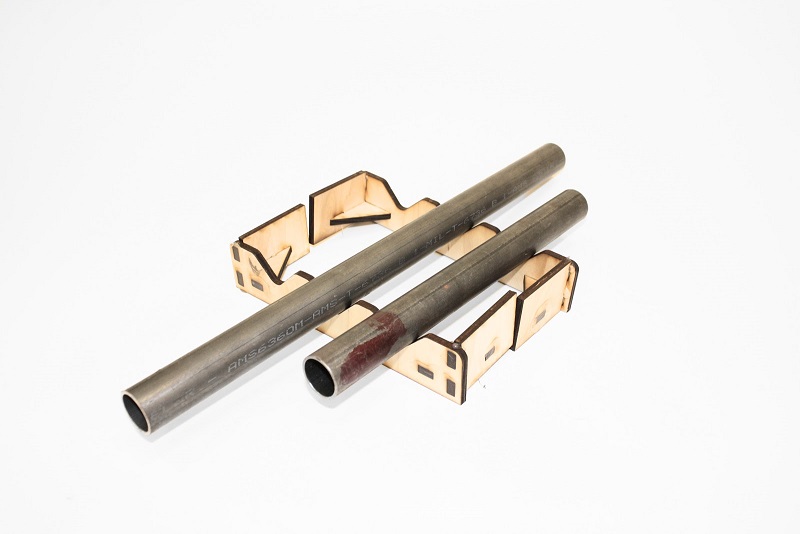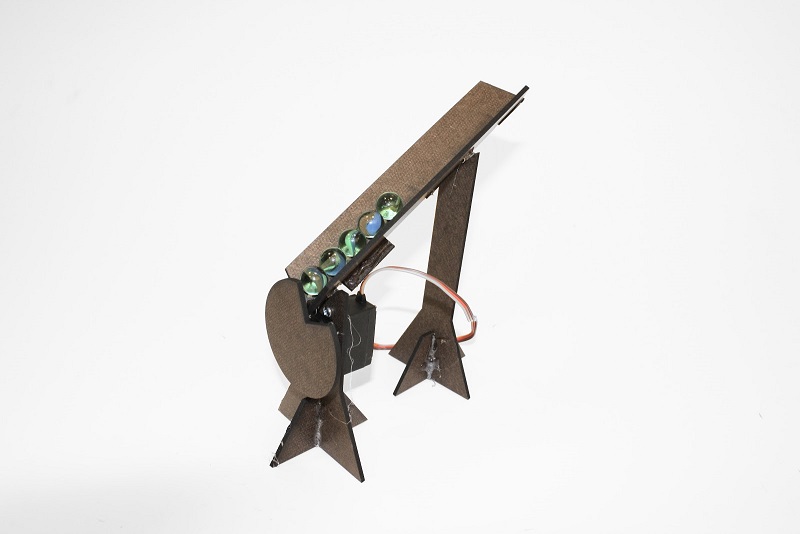Sprint 1
Overall Project Goal
Create a machine that plays music using marbles, inspired by the Wintergatan marble machine, and with the following attributes:- Capable of playing any song
- Aesthetically pleasing and mechanically complex
- Stores songs using mechanical memory
Sprint Goals
- Find a viable musical instrument
- Find a viable marble dropping mechanism
- Construct a working prototype capable of playing songs with multiple notes
Instrument Manufacturing
In order to play nice music we need a nice instrument. We decided make, not buy, an instrument in order to both reduce cost to us and as a fun challenge. At the beginning, we weren’t sure what material would be best, so we manufactured a range of possible instruments from different materials. After a few hours of prototyping and testing the results with marbles, we rated them on three categories.
| Instrument | Timbre | Clear Pitch | Manufacturability | Total |
|---|---|---|---|---|
| Plastic woodblock | 3 | 2 | 6 | 11 |
| Plywood woodlock | 3 | 3 | 6 | 12 |
| Solid woodblock | 6 | 4 | 3 | 13 |
| Wooden key | 4 | 5 | 9 | 18 |
| Hollow wooden key | 6 | 6 | 8 | 20 |
| Metal pipe | 8 | 9 | 8 | 25 |
| Sheet metal key | 3 | 3 | 6 | 12 |
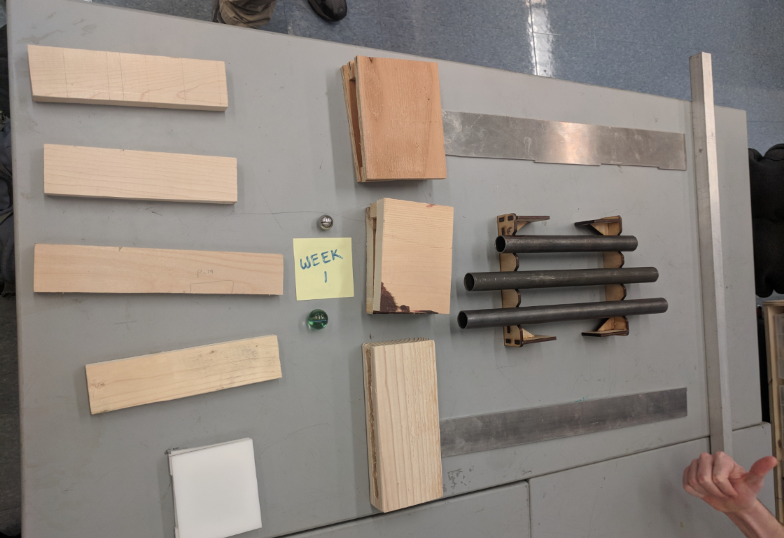
As you can see from the chart above, the overall most effective instrument was metal pipes. They are relatively cheap, easy to manufacture, and high in sound quality and tunability. After this assessment, we proceeded into Sprint 2 with a good idea of how to make an effective instrument.
Actuation
Additionally, we experimented with a few different forms of actuation to drop marbles. First, we tried out electromagnets. We originally thought that these would be an elegant solution to marble actuation because they had no moving parts, and should easily have enough force to hold a quarter-inch ball bearing.
However, we ran into some problems with this approach. First of all, it takes a long time to manufacture your own electromagnets, as you have to spool your own coil out of wire. Secondly, even with a huge number of coils, we still ran into problems with low holding force and enormous current draw. We eventually determined that homemade electromagnets were not a feasible solution. Additionally, purchasing electromagnets would have been expensive and required a very long lead time, leaving us insufficient time for testing.
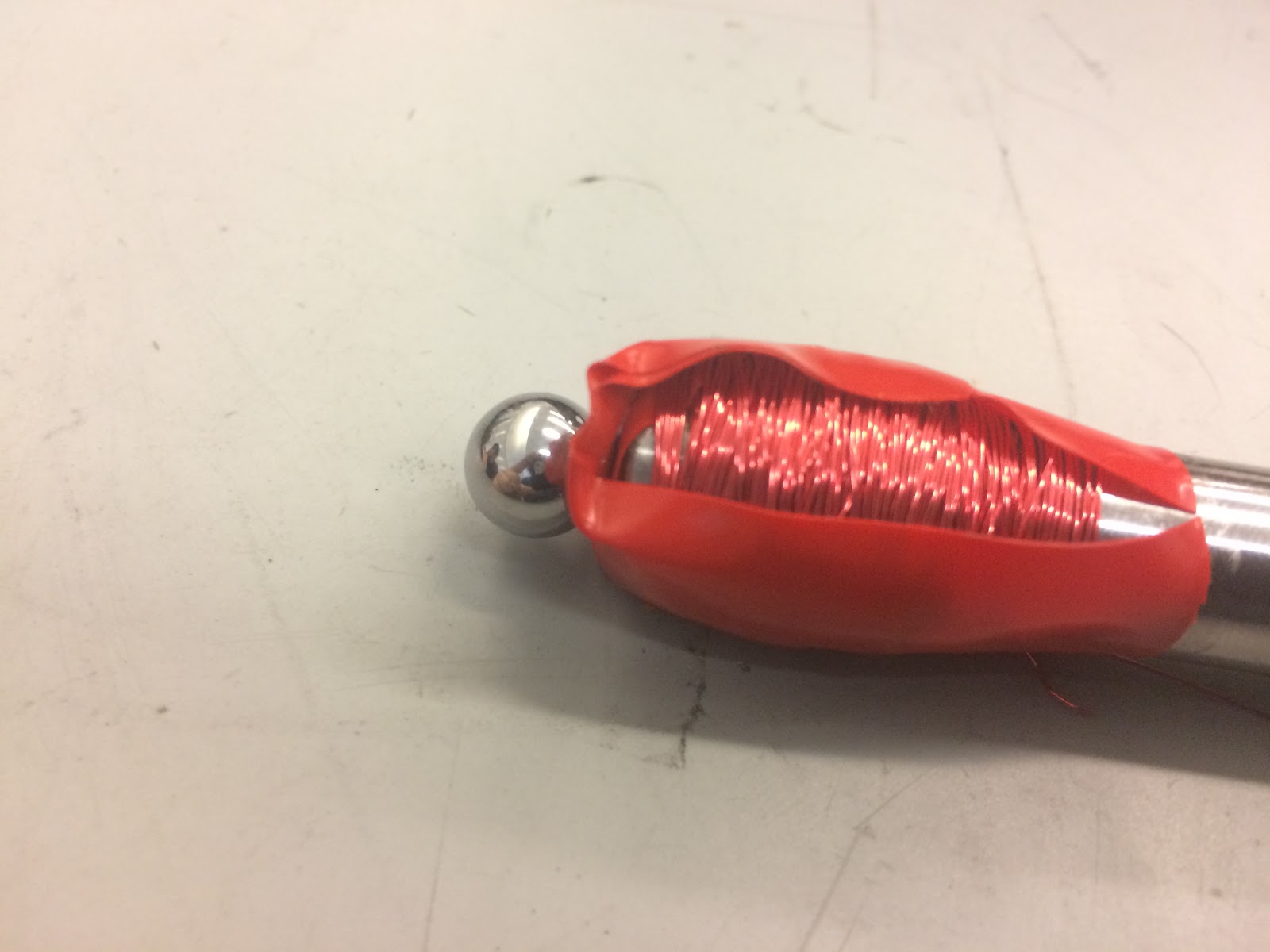
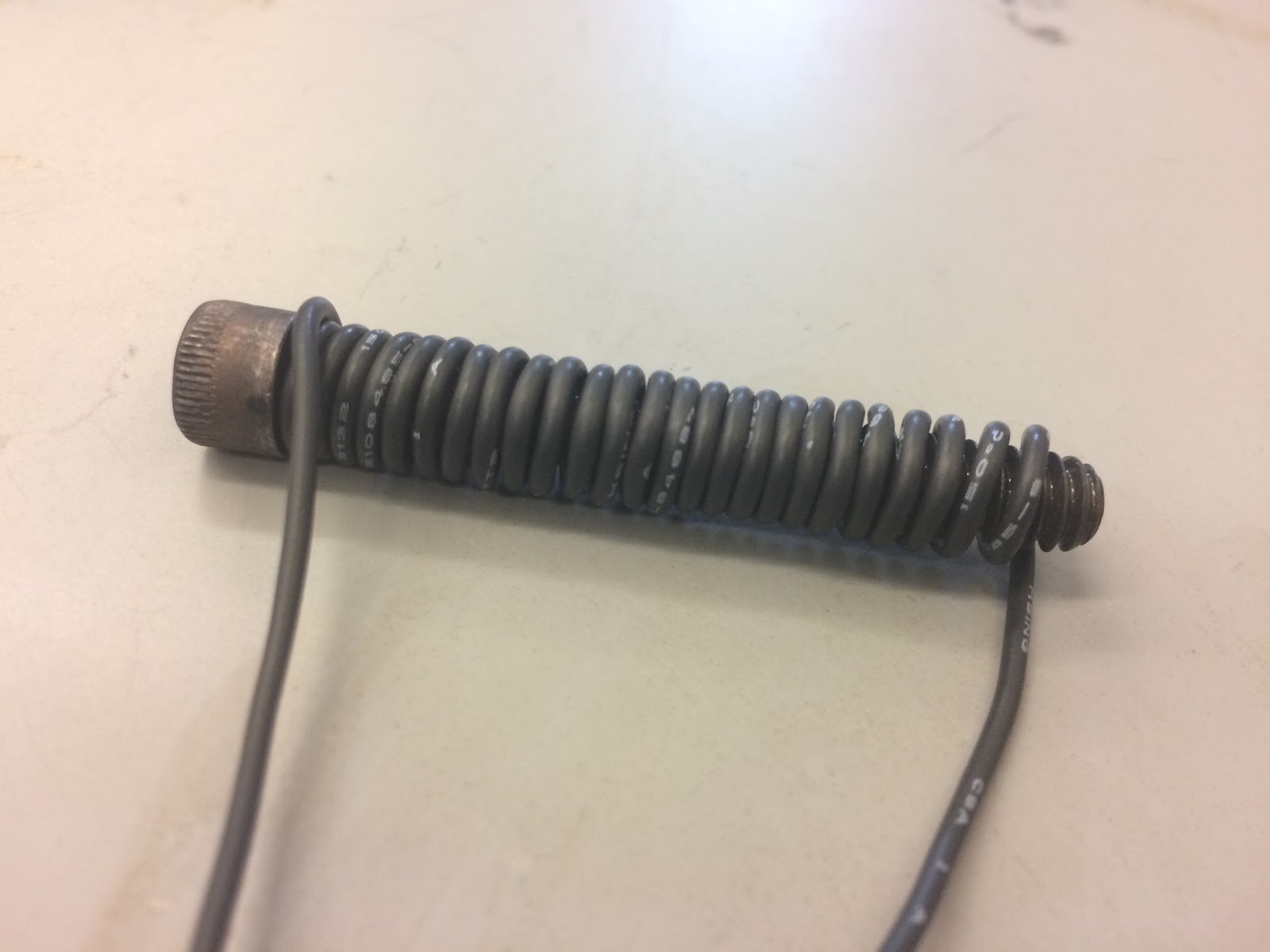
Sprint Results
Although this worked for our Sprint 1 prototype, we determined moving forward that servos were not the ideal tool for actuation. They are slow to actuate, make a lot of noise, and require an individual actuator for every one or two notes. With this information in mind, we started to investigate mechanical memory as an alternative to individual actuation methods for Sprint 2.
Below are two photos of our final Sprint 1 prototype, which used metal tubes as an instrument and servos for actuation.
